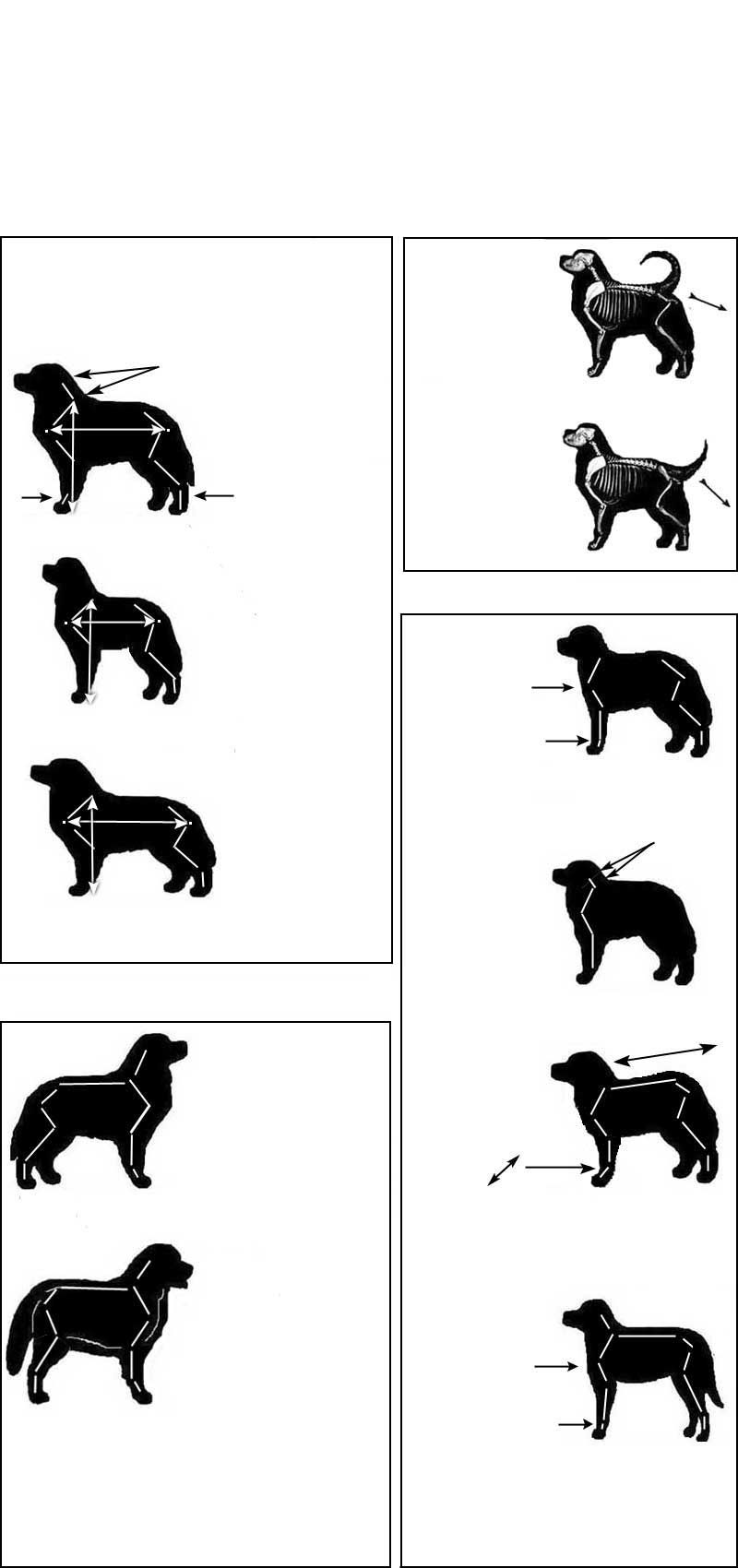PDF version pg. 1
PDF version pg. 2

While the dog's structure is balanced, it does not provide a framework for good muscling or substance. A structure such as this shortens stride. This dog will take more steps to cover ground and tire more quickly than a dog with moderate angulation.
The dog shown on the right has slight angulation of fore and rear quarters. The pasterns are straight as well.
The standard describes Bernese as sturdy and balanced, deep chested with a flat topline. Shoulders are moderately laid back, flat-lying, well-muscled and never loose. The thighs are broad, strong and muscular The stifles are moderately bent and taper smoothly into the hocks.
Correct Angulation & Balance
Structural Studies
Note the angle of the pastern. The pasterns are weak.
The dog above is low in front and high in rear. The topline inclines (slopes down, rear to front).This type of conformation places considerable stress on the front end assembly. The body's weight is shifted onto the dog's frontquarters due to the slope of the topline.
Short neck
Proportions
Length of back compared to length of leg
The dog shown on the right has a short neck. The The forequarters show straight angulation. These traits often occur together in Bernese. The elbows are not set well under the ribcage. The front of the chest appears flat.
The dog shown above is short in back and high on leg.
The neck is of medium length and blends smoothly into the back.
Angle of croup affects tailset.
A long pelvic bone set at the correct angle results in a correct tailset.
The first dog has an incorrect croup angle and carries his tail high, over his back . The second dog shows a good tailset. His tail will be carried low when in repose. It will not be carried over his back.
Please notice how straight shoulders affect the tie in of the neck to the back. The transition is not smooth.
This dog has straight shoulders and pasterns. When a dog gaits, straight pasterns do not absorb the weight of the front quarters as well as pasterns with a gentle slope. The dog's fore and rearquarters angulation are not balanced.
Tailset
The dog shown below has correct proportions, and good balance of fore and rearquarters angulation.
The hocks are perpendicular to the ground. The dog's feet turn neither in nor out.
How a dog is made - its proportions, length of back, length of leg and fore and rear angulation affects the dog's movement.
Correct proportions and angulation allow for efficiency, agility and power when a dog gaits. Long legs coupled with short backs and long backs coupled with short legs are seen in some Bernese. These traits can affect soundness and durability in the dogs that display them.
Angle of croup indicated by arrows
The pasterns are moderately inclined.
The dog shown above is long in back and low on leg.
The outline we see when looking at a dog is often a reflection of underlying structure and physical condition. Bernese carry heavy coats which may mask structure. Long furnishings, heavy hair on the legs, and differing lengths of hair occurring on various parts of the body can result in incorrect structure appearing more correct than it actually is. Likewise a dog with correct structure might not appear that way. Dogs carrying heavy, dense coats are sometimes mistakenly called fat; when, in fact, they are in good weight and condition. A hands on examination and watching dogs gait offers insight into how dogs are really made.
The studies below explain a few basic structural aspects of Bernese. A dog's structure influences the kind of work he is capable of doing. It also may determine whether or not he will remain physically sound over the course of his life. Structural defects result in more stress on bones, joints, tendons and muscles which can significantly limit a dog's ability to function in day to day living. Structure is inherited.
Structure & Proportion Studies